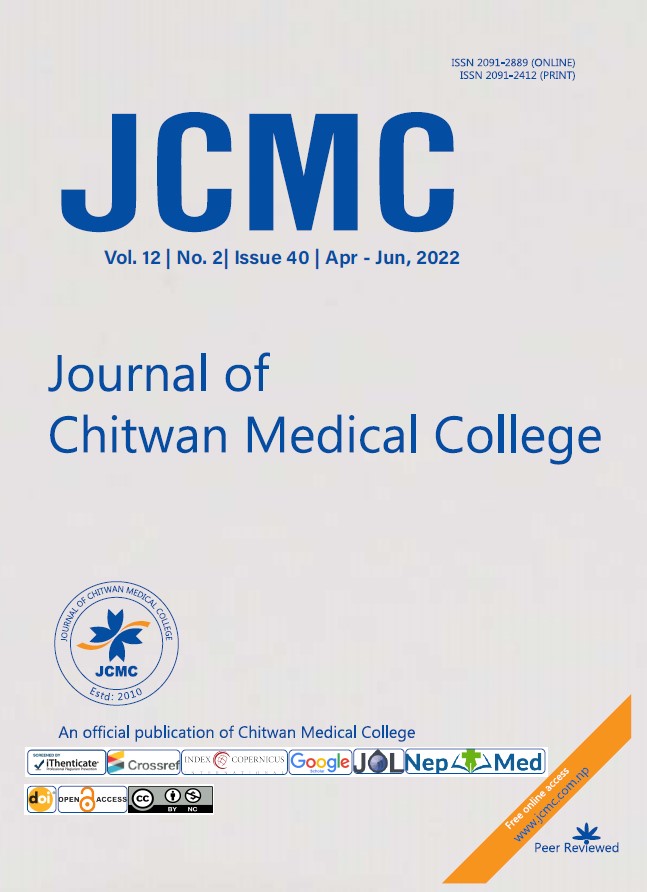PROFILE OF ACUTE GASTROENTERITIS IN CHILDREN UNDER FIVE YEARS OF AGE, AND THEIR ASSOCIATION WITH BLOOD UREA NITROGEN-TO-CREATININE RATIO
Keywords:
Acute gastroenteritis, Blood urea nitrogen, Children, Renal functionAbstract
Background: Acute gastroenteritis (AGE) is a major cause of childhood morbidity and mortality, especially in developing countries. This study aimed to explore the clinical and laboratory profile in under five children with AGE. It furthermore aimed to study the association of socio-demographic and clinical parameters with blood urea nitrogen and serum creatinine ratio (BCR).
Methods: This was a cross-sectional study carried among 62 under-five children in the Pediatric Department, Nepalgunj Medical College and Teaching Hospital. Data was entered in excel and analyzed in statistical package for social sciences. Demographic and clinical data obtained from informants was presented as frequency and percentage. BCR was calculated based on baseline serum urea and creatinine values. Chi square test and logistic regression were used to study the association of clinical and demographic profiles with BCR. Adjusted odds ratio was calculated at 95% confidence interval.
Results: The mean age of participants was 26 months. Most of the children belonged to low socio-economic status (44, 70.97%). Dehydration was the commonest clinical association (51,82.25%) followed by fever (31,50%) and abdominal pain (31,50%). Multivariate logistic regression showed that children with dehydration had greater odds (Adjusted odds ratio (AOR)=5.82) of having BCR greater than 20:1 as opposed to those without dehydration.
Conclusions: AGE was commonly seen in children with low socio-economic status. Dehydration, fever and abdominal pain were common clinical associations. High BCR (20:1) was positively associated with presence of dehydration in children presenting with acute gastroenteritis.





